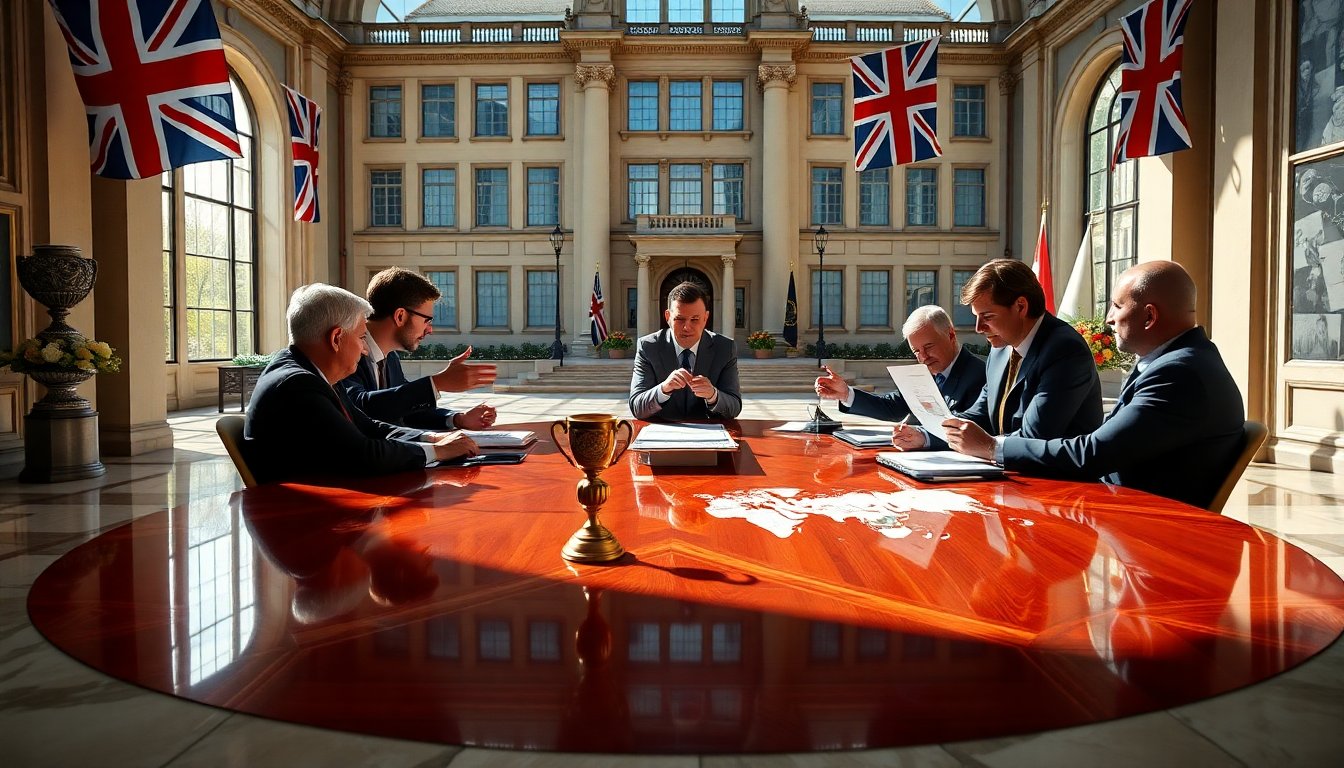Table of Contents
In a rapidly changing landscape of international trade, recent announcements regarding tariffs on pharmaceuticals, automotive vehicles, and entertainment have unsettled British authorities. Keir Starmer, who believed he had secured a favorable trade agreement with the United States, now faces evolving demands from the Trump administration.
The backdrop includes a grand State Visit earlier this month, featuring a parade with King Charles III, troops, and aerial displays. However, this diplomatic charm has been overshadowed by new tariff revelations that reveal cracks in the trade pact established between Starmer and Trump.
Tariff implications for pharmaceuticals and automotive sectors
As part of the trade agreement reached in May, the U.S. agreed to reduce tariffs on British automotive exports to 10 percent. Despite this, the UK has yet to finalize a long-promised zero-tariff arrangement for steel and aluminum. New threats from Trump now loom, particularly concerning the pharmaceutical sector, where he has indicated a potential 100 percent tariff on drug imports unless companies initiate construction of manufacturing plants within the U.S.
While the European Union has capped its pharmaceutical tariffs at 15 percent, the UK’s stance remains ambiguous. The May agreement hinted at potential preferential treatment for tariffs, contingent upon improving conditions for U.S. pharmaceutical companies operating in the UK. This situation reopens discussions surrounding the National Health Service’s (NHS) pricing mechanisms, which have long been a point of contention for U.S. drug manufacturers.
Concerns over NHS pricing and U.S. demands
Trump has criticized the NHS’s cost-effectiveness assessments, which often compel pharmaceutical companies to reduce prices before new medications can be made available to patients. He has previously expressed dissatisfaction with the disparity in drug costs, urging major pharmaceutical companies to align their pricing strategies with most favored nation rates.
In response to these pressures, leading British pharmaceutical companies are demonstrating their willingness to comply with U.S. requests. For example, GSK is constructing an $800 million facility in Pennsylvania, while AstraZeneca has unveiled a significant investment plan amounting to $50 billion in the U.S. through 2030. This proactive approach positions them favorably, as they meet Trump’s criteria for exemptions related to ongoing construction projects.
Broader implications for British industries
Despite these developments, uncertainty surrounding U.S. tariff policies continues to trouble industry leaders. Mark Dayan, a Brexit program lead at the Nuffield Trust, emphasizes that the implications of Trump’s tariff threats must be viewed through the lens of broader U.S. expectations concerning trade agreements. The Economic Prosperity Deal intertwines pharmaceutical tariffs with the overarching theme of increased costs for medicines.
Exemptions linked to tariffs are contingent on the UK’s adherence to supply chain security standards, which prove challenging given the complex globalized nature of the pharmaceutical industry. The intricate web of supply chains complicates the identification of product origins, making negotiations even more critical.
The NHS and the negotiation landscape
Ongoing discussions between the UK government and U.S. officials regarding NHS drug pricing are fraught with urgency. Science Minister Patrick Vallance has indicated that if Britain wishes to maintain its attractiveness for investment, the NHS may need to allocate more funds to pharmaceutical expenditures. He cautioned that without strategic adjustments, tariffs could exacerbate existing challenges.
New Trade Secretary Peter Kyle has characterized pharmaceutical companies as adept negotiators, highlighting their ability to leverage media influence in discussions. He reassured stakeholders that the UK government is equally committed to navigating complex negotiations surrounding pharmaceutical investments.
Uncertain future for UK industries amid tariff threats
The backdrop includes a grand State Visit earlier this month, featuring a parade with King Charles III, troops, and aerial displays. However, this diplomatic charm has been overshadowed by new tariff revelations that reveal cracks in the trade pact established between Starmer and Trump.0
The backdrop includes a grand State Visit earlier this month, featuring a parade with King Charles III, troops, and aerial displays. However, this diplomatic charm has been overshadowed by new tariff revelations that reveal cracks in the trade pact established between Starmer and Trump.1
The backdrop includes a grand State Visit earlier this month, featuring a parade with King Charles III, troops, and aerial displays. However, this diplomatic charm has been overshadowed by new tariff revelations that reveal cracks in the trade pact established between Starmer and Trump.2
The backdrop includes a grand State Visit earlier this month, featuring a parade with King Charles III, troops, and aerial displays. However, this diplomatic charm has been overshadowed by new tariff revelations that reveal cracks in the trade pact established between Starmer and Trump.3


